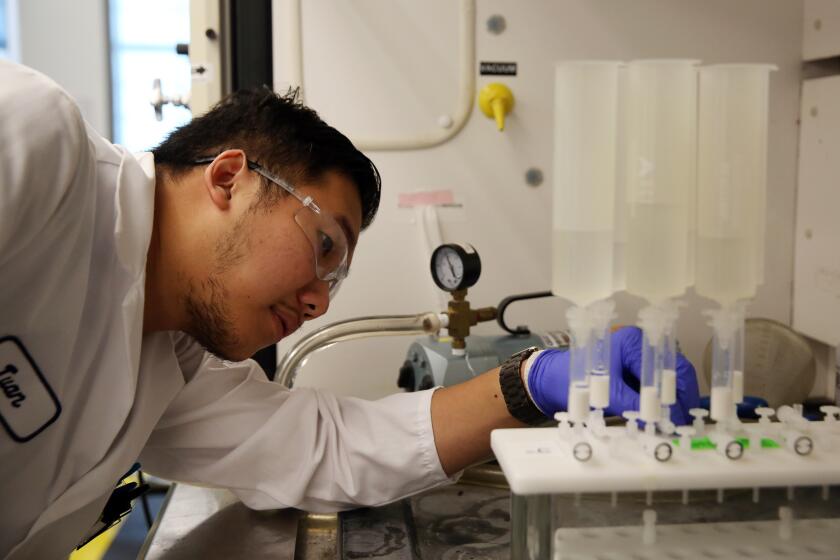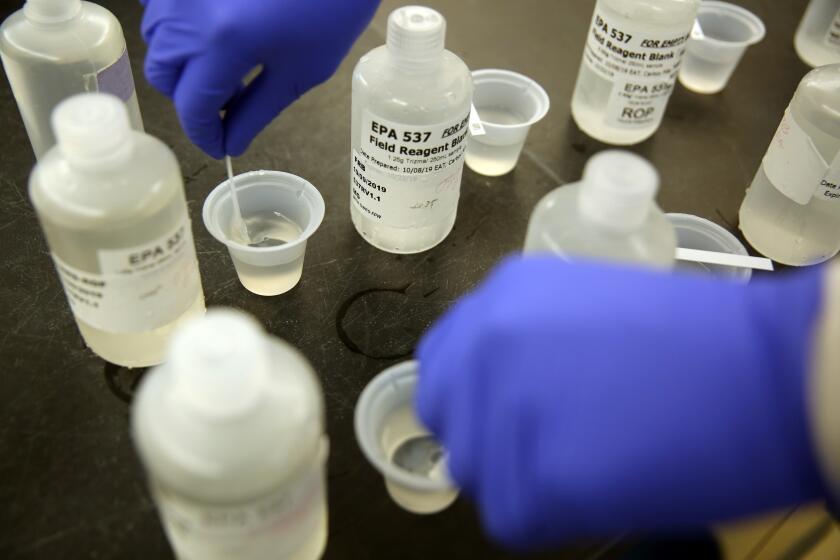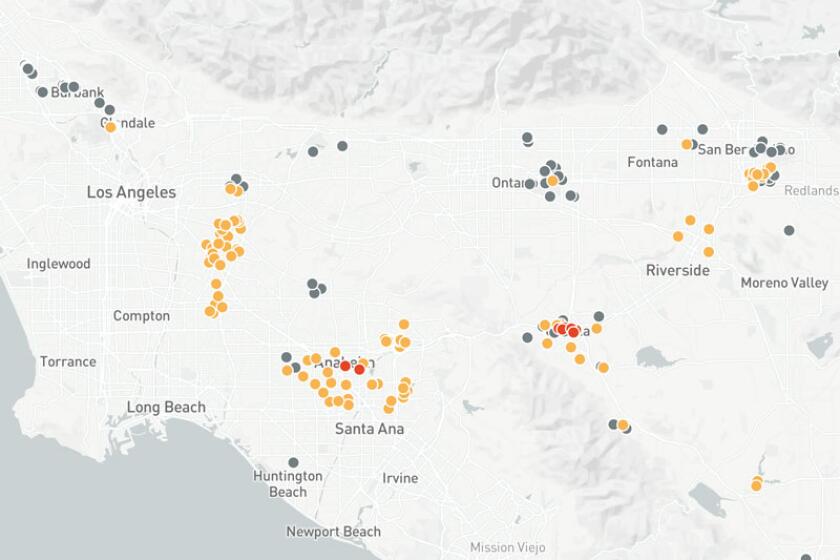EPA unveils strategy to regulate toxic âforever chemicalsâ

WASHINGTON â The Biden administration is launching a broad strategy to regulate toxic industrial compounds associated with serious health conditions that are used in products ranging from cookware to carpets and firefighting foams.
Michael Regan, the head of the Environmental Protection Agency, said it is taking a series of actions to limit pollution from a cluster of long-lasting chemicals known as PFAS that are increasingly turning up in public drinking water systems, private wells and even food.
The plan is intended to restrict PFAS from being released into the environment, accelerate cleanup of PFAS-contaminated sites such as military bases and increase investments in research to learn more about where PFAS are found and how their spread can be prevented.
âThis is a bold strategy that starts with immediate actionâ and includes additional steps âthat will carry through this first termâ of President Biden, Regan said in an interview with the Associated Press. âWeâre going to use every tool in our toolbox to restrict human exposure to these toxic chemicals.â
PFAS, called âforever chemicalsâ because they last so long in the environment, have been associated with serious health conditions, including cancer and reduced birth weight.
Under the strategy to be announced Monday, the EPA will move to set aggressive drinking water limits for PFAS under the Safe Drinking Water Act and will require PFAS manufacturers to report on how toxic their products are. The agency also is moving to designate PFAS as hazardous substances under the so-called Superfund law that allows the EPA to force companies responsible for the contamination to pay for the cleanup work or do it themselves.
The Department of Defense, which oversees dozens of military bases where PFAS has contaminated the soil and groundwater, is still assessing the extent of the damage. In a news release Monday, the administration said the Pentagon expects to have those assessments completed by the end of 2023.
Meanwhile, California health officials are far ahead of Washington. The state proposed the nationâs toughest limits on PFAS in drinking water earlier this summer, recommending a standard of .007 part per trillion for PFOA, and 1 part per trillion for PFOS. These are the two most common chemicals within the family of chemicals known as PFAS. By contrast, the EPAâs current drinking water health advisory for PFOS and PFOA is 70 parts per trillion.
In response to The Timesâ reporting on PFAS contamination at California military bases, Sen. Dianne Feinstein (D-Calif.) wrote in 2019 that she would ensure the contamination was remediated âas quickly as possible.â The Times found 21 bases in California had been contaminated, including six where the chemicals threatened the water supply in nearby communities. A spokesman for the senator said Monday that effort has been impeded by the lack of strict, enforceable standards. Once either the federal EPA or California finalizes a standard, the Pentagon must follow it.
Nearly 300 drinking water wells and other water sources in California have been found to have traces of man-made chemicals linked to cancer.
The federal governmentâs actions will make it easier for the EPA to ensure that cleanups are conducted safely and that âthe polluter pays for that,âł Regan said.
The regulatory strategy comes as Congress considers wide-ranging legislation to set a national drinking water standard for certain PFAS chemicals and clean up contaminated sites across the country, including military bases where high rates of PFAS have been discovered.
PFAS is short for per- and polyfluoroalkyl substances that are used in nonstick frying pans, water-repellent sports gear, stain-resistant rugs and countless other consumer products. The chemical bonds are so strong that they donât degrade or do so only slowly in the environment and remain in a personâs bloodstream indefinitely.
Legislation passed by the House would set a national drinking water standard for PFAS and direct the EPA to develop discharge limits for a range of industries suspected of releasing PFAS into the water. The bill has stalled in the Senate.
While Regan welcomes congressional action, he said the EPA has authority to act on its own.
âYou know, PFAS contamination has been devastating communities for decades now, even before we knew how dangerous these chemicals were,ââ he told the AP.
Toxic chemicals linked to cancer have been found in dozens of California water systems. Here are some often-asked questions residents have about how to limit their exposure and reduce the level of PFAS in their tap water.
A former North Carolina environmental regulator who took over as the EPA head in March, Regan said he saw firsthand in his home state how dangerous PFAS can be.
As North Carolinaâs top environmental official, Regan led negotiations that resulted in the cleanup of the Cape Fear River, which has been dangerously contaminated by PFAS industrial compounds that were released for decades from a manufacturing plant run by a spinoff of chemical giant DuPont.
âI spent time with families in their communities, talking to them about the fears and worries that they had,ââ said Regan, who was set to announce the EPA actions Monday at a news conference in Raleigh. âI spent time talking to mothers who were concerned about potential long-term impacts to their children, caregivers who were wondering if terminal illnesses of their loved ones were connectedâ to the PFAS release from the Fayetteville Works plant.
âSo there is a real sense of urgency,ââ he added. âAnd in North Carolina, we moved forward. We followed the law and the science, and we held the polluter accountable.ââ
Still, he said the state would have been in a stronger position âif the federal government would have been a better, stronger partner.ââ
The EPA under his leadership has âdone more in eight monthsâ on PFAS than the previous administration did in four years, Regan said.
Officials expect a proposed rule on PFAS in drinking water by 2023, Regan said. âWeâre going to move as quickly as possible to set these safe drinking water limits,ââ he said.
Action on PFAS will not be done âon the backs of the American people,ââ Regan added. âWe are holding the polluters accountable, and weâre using the full extent of our statutory authority to be sure that they pay for what theyâve done.ââ
Times staff writer Anna Phillips contributed to this report.
More to Read
Get the L.A. Times Politics newsletter
Deeply reported insights into legislation, politics and policy from Sacramento, Washington and beyond. In your inbox three times per week.
You may occasionally receive promotional content from the Los Angeles Times.













